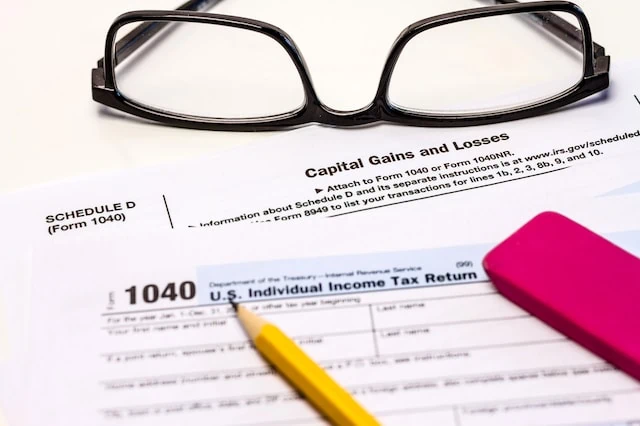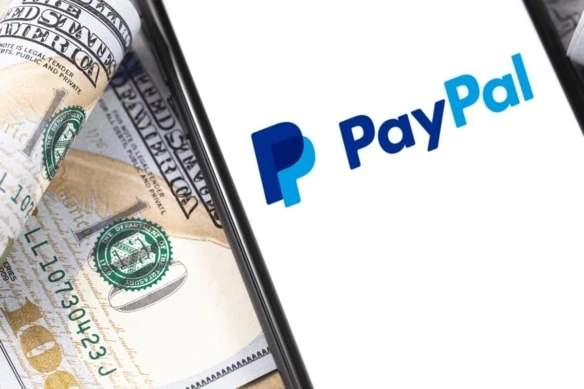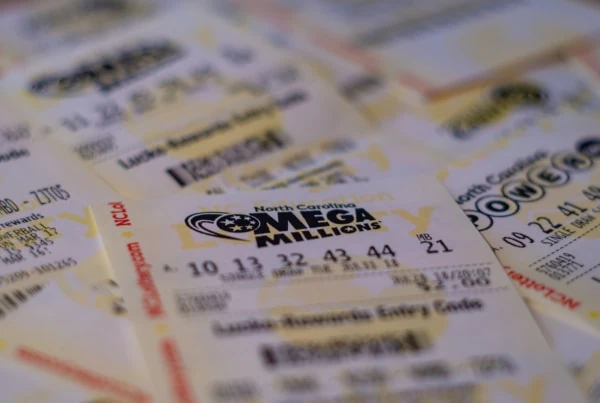Once again, the IRS has delayed implementation of new rules that would have resulted in a Form 1099-K being sent to more than 30 million Americans who received payments this year through PayPal, Venmo, eBay, StubHub, Etsy, and many other similar apps.
Under the new rules, “third-party settlement organizations,” which include companies running online payments apps and marketplaces, would be required to report total payments over $600 during the year for the sale of goods and services on Form 1099-K. Both the IRS and the person who received the payments would receive a copy of the form.
The new requirements were supposed to take effect in 2022. However, in December 2021, the IRS pushed implementation to 2023. And now, the IRS has kicked the can down the road again and delayed application of the new rules to 2024. They also announced a plan to phase-in the new rules next year.
The latest delay raises several questions for people who use any of the impacted payment and sales apps. For instance, who will now receive a 1099-K form for 2023 payments? If you receive a 1099-K, what do you do with it? And what happens next year? If you’re asking these questions and more, here’s what you need to know.
What Is a 1099-K Form?

Form 1099-K is a tax form used to notify the IRS of certain payments for goods or services that might be taxable income to the payee. According to the IRS, this type of reporting increases voluntary tax compliance, boosts tax collections, and reduces the “tax gap” (i.e., the difference between taxes owed and taxes paid).
The form is also used by the payee to complete his or her federal and state income tax returns. It should be kept with other tax records.
Generally, 1099-K forms are sent by:
- Banks and similar organizations handling credit, debit, or gift card transactions
- Third-party settlement organizations handling payments for the purchase of goods or services
Among other things, the form includes information about the payee’s (e.g., name, address, and Social Security or taxpayer identification number), how much the payee received during the year (by month), number of payments, and any tax withheld.
Who Will Receive a 1099-K Form for 2023 Payments?

If you run a small business as a sole proprietor or are self-employed (including side gigs), you can expect to receive a Form 1099-K from your payment processor if customers or clients pay you directly by credit, debit, or gift card. This requirement hasn’t changed and applies regardless of how much you’re paid or how many payments you receive during the year.
For 2023, you’ll also receive a 1099-K form if you received payments for goods or services through a payment app or online marketplace totaling over $20,000 from over 200 transactions during the year (you must have both $20,000 and 200 transactions). This is the “old” rule that still applies until the new payment threshold takes effect.
According to the IRS, this includes payments for any:
- Goods you sell, including personal items such as clothing or furniture
- Services you provide
- Property you rent
In addition, the IRS states that payments can be made through any:
- Payment app
- Online community marketplace
- Craft or maker marketplace
- Auction site
- Car sharing or ride-hailing platform
- Ticket exchange or resale site
- Crowdfunding platform
- Freelance marketplace
You can receive a separate 1099-K form from each payment platform that you use.
WealthUp Tip: You won’t receive a 1099-K form for purchases you make with a credit, debit, or gift card. You’ll only receive the form if you receive qualifying payments.
Will Payments From Family or Friends Trigger a 1099-K Form?

According to the IRS, Form 1099-K shouldn’t be sent for payments received from family or friends through PayPal, Venmo, or similar apps as a gift or repayment for a personal expense (e.g., for a birthday present, to reimburse you for part of a restaurant bill, and the like).
The purpose of sending a 1099-K is to let the IRS know about taxable payments. However, personal transaction payments to you from family members, friends, and others that aren’t for goods or services you’re providing aren’t included in your taxable income.
Related: Charitable Tax Deduction: What to Know Before Donating
When Will I Receive a 1099-K Form?

If you receive a Form 1099-K for 2023 payments, you should receive it by Jan. 31, 2024. With your consent, you can receive the form electronically. Otherwise, you’ll receive a paper copy of Form 1099-K in the mail.
The sender has until Feb. 28, 2024, to send a copy of your 1099-K form to the IRS (April 1, 2024, if it’s filed electronically).
What Should I Do If I Receive a 1099-K Form?

What you do with the information on a 1099-K form depends on why you received it. If you’re a sole proprietor or self-employed person, you’ll most likely use the form to complete your Schedule C (that’s the tax form used to report profit or loss from a business).
If you receive a 1099-K form from a third-party settlement organization because you received over $20,000 through more than 200 sales of personal items, how you report the relevant information on your tax return depends on whether you profited or lost money on your sales.
Profits on the sale of personal items are generally taxable and must be reported as a capital gain on Form 8949 and Schedule D.
Losses on the sale of personal items reported on Form 1099-K aren’t taxable. They’re not deductible, either. However, if they’re included on Form 1099-K, you have to account for them on your tax return in one of two ways.
The first option is to report the payment as “Other income” on Line 8z of Schedule 1 and then offset it by also reporting the payment as an “Other adjustment” on Line 24z of Schedule 1. (Write “Form 1099-K Personal Item Sold at a Loss” in the spaces provided for comments on both Lines 8z and 24z.)
The second option is to report the loss on Form 8949 and Schedule D. This is the recommended method if you already have to file Schedule D for other purposes.
If you have both profits and losses from sales of personal items during the year, they must be reported separately on your tax return as described above.
Related: Best College Funds for Babies [How to Start Saving Smart]
What If I Sell Both Business and Personal Items?

If you receive payments through a single app for the sale of both business-related goods or services and personal items, it’s possible to receive a Form 1099-K that includes both types of payments.
In that case, you’ll have to rely on your own records to determine which payments are for business sales and which payments are for personal sales. Once you have split the two, you can treat each set of payments according to the rules provided earlier.
This scenario illustrates the importance of keeping good records. If you don’t have proper documentation to back up your allocation of income, you could find yourself in a difficult situation if the IRS decides to audit your tax return … which is generally more likely for self-employed people and those who receive 1099 forms.
WealthUp Tip: A better practice is to use separate payment apps, or at least separate accounts, if you’re receiving payments for both business and personal sales. That way, you’ll receive separate 1099-K forms for each type of payment.
What If I Get an Incorrect 1099-K Form?

If you receive a Form 1099-K that’s incorrect, or you don’t think you should have received the form at all, contact the company that sent the form (i.e., the “Filer”) and ask for a corrected form. The sender’s name and contact information can be found in the upper left corner of the form.
You can also contact the payment settlement entity (PSE). Its name and phone number can be found in the lower left side of the form.
If you can’t get a corrected form, account for the error by reporting offsetting amounts on Lines 8z and 24z of Schedule 1 (as described above for reporting a loss) that result in the appropriate amount of taxable income being reported. (Write “Form 1099-K Received in Error” in the spaces provided for comments on both Lines 8z and 24z.)
Do I Owe Tax If I Don’t Receive a Form 1099-K?

Whether or not you receive a 1099-K form, you still must report all taxable income on your tax return. Delaying the new 1099-K rules doesn’t change this requirement.
As a result, if you receive payments for the sale of goods or services this year from PayPal, StubHub, Venmo, or another similar app, you’re still required to report and pay tax on any profits even if you don’t receive a Form 1099-K for the 2023 tax year.
WealthUp Tip: You might also have to make estimated tax payments during the year if you receive taxable payments for the sale of goods or services, or from renting property.
Related: Retirement Plan Contribution Limits and Deadlines for 2023
What Will Happen In 2024 With 1099-K Forms?

In addition to announcing the delay in implementing the new Form 1099-K rules until 2024, the IRS also stated that it’s planning to use a $5,000 threshold for the 2024 tax year instead of the $600 threshold provided by law. This is because the tax agency wants to “phase-in” the $600 threshold.
At this time, it’s not known how long the phase-in period will last. An IRS spokesperson indicated that the tax agency will further evaluate the $5,000 threshold in 2025. So, it’s possible that the $600 threshold still won’t apply in 2025.
Whether there will be a transaction threshold for 2024 and beyond is still an open question, too. Plus, if a threshold is adopted during the phase-in period, it could be 200 transactions or some other amount.
The IRS is also considering undisclosed changes to Form 1040 and related schedules for 2024 to make the reporting amounts on Form 1099-K easier.
WealthUp Tip: There are questions as to whether the IRS has the authority to delay and/or phase-in the $600 threshold. The new rules are included in the U.S. tax code, so it has been argued that only Congress can modify the rules. However, the IRS claims it has wide discretion when it comes to implementing the tax laws. Stay tuned for more developments.



![Child Tax Credit FAQs [What Every Parent Needs to Know] 20 child tax credit parents kissing baby](https://wealthup.com/wp-content/uploads/child-tax-credit-parents-kissing-baby-600x403.webp)


